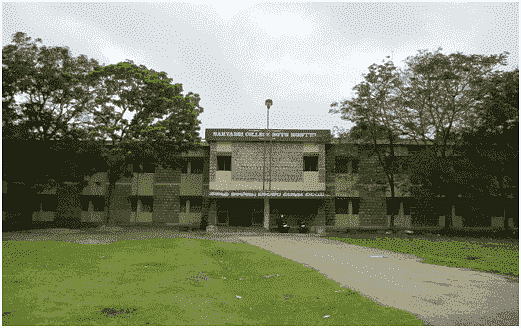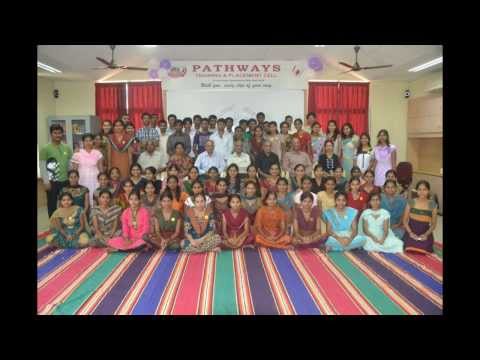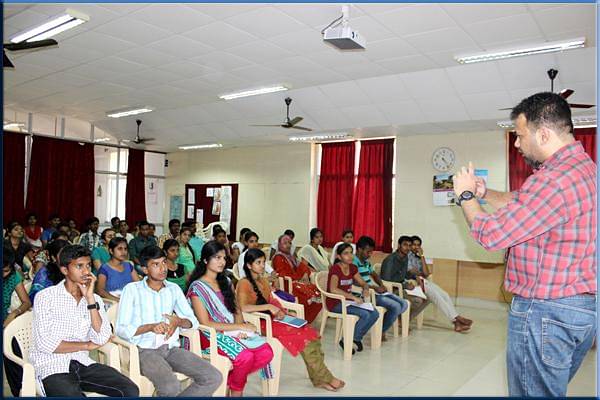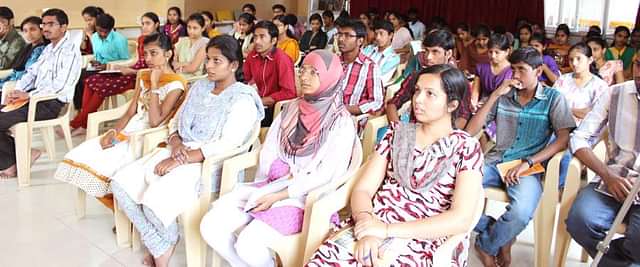Written By Amit Singh - Content Writer
Updated on - Jan 06, 2026 05:54 PM IST
Sahyadri Science College Latest Updates
XAT 2026 provisional answer key is out at the official website xatonline.in. Candidates can check and download the answer key and raise objections using their login credentials.
XAT 2026 response sheet has been released on the official website, xatonline.in. Registered candidates can log in using their credentials to download the question paper along with the answer key.
MAT February 2026 session registration process has begun on the official website, mat.aima.in.Candidates can submit their applications till February 23, 2026, for the Paper-Based Test (PBT) and up to March 2, 2026, for the Computer-Based Test (CBT). The PBT exam is scheduled for March 1, 2026, while the CBT will be conducted on March 8, 2026.
About Sahyadri Science College
Sahyadri Science College is situated in Shimoga in Karnataka state of India. Established in 1940, SSC is a Private college. The college is affiliated with Kuvempu University Shimoga and accredited by NAAC. Sahyadri Science College offers 13 courses across 4 streams namely Arts, IT, Science, Hotel Management..Popular degrees offered at Sahyadri Science College include BSc, BCA, MSc, MTA..Besides a robust teaching pedagogy, Sahyadri Science College is also a leader in research and innovation.Focus is given to activities beyond academics at Sahyadri Science College, which is evident from its infrastructure, extracurricular activities and national & international collaborations. The placement at Sahyadri Science College is varied, with recruitment options both in corporates and public sector as well as entrepreneurship.
Read Less
Top Courses at Sahyadri Science College
| Course Name | Fees | Eligibility |
| B.Sc. (Bachelor of Science) | ₹10,150 - 12,240 | Higher secondary education (10+2) in the science stream, Subjects: Physics, Chemistry, and Mathematics or Biology, Minimum aggregate percentage requirement |
| B.C.A. (Bachelor of Computer Applications) | 10+2 or equivalent examination, studied Mathematics as a compulsory subject, minimum aggregate score of 50% in 10+2 examination | |
| M.Sc. (Master of Science) | ₹17,000 - 35,975 | Undergraduate degree in a relevant field, Minimum aggregate score of 50% or equivalent grade |
| M.T.A. (Master of Tourism Administration) | ₹17,000 | Bachelor's degree in any discipline from a recognized university, Minimum aggregate score of 50% or equivalent CGPA in undergraduate program |
Show More
Table of Contents
Sahyadri Science College Courses and Admission 2026
₹10,150 - 12,240Fees
3 YearsDuration
RegularStudy Mode
Exams Accepted:CBSE 12th , Karnataka 2nd PUC
Courses OfferedView AllB.Sc in English , B.Sc. in Physics and Mathematics , B.Sc in Hindi , B.Sc in Sanskrit , B.Sc in Urdu
₹17,000 - 35,975Fees
2 - 5 YearsDuration
RegularStudy Mode
Exams Accepted:CBSE 12th , Karnataka 2nd PUC
Courses OfferedView AllM.Sc. in Chemistry , M.Sc. in Biotechnology , M.Sc. in Microbiology , M.Sc. in Industrial Chemistry , M.Sc (Hons.,) in Applied Chemistry
Sahyadri Science College Highlights
Sahyadri Science College Placements
Sahyadri Science College Placement Stats 2022
Median salary
2.2 Lacs
Sahyadri Science College Reviews
Students Feedback
s
syed habeebulla • B.Sc. in Physics and Mathematics | 2024 | Oct 16, 2024 13:04:40
Sahyadri science college shimogga, affiliated with kuvempu university shankaraghatta,sorrounded with greens, facilitating the well education to the future.
S
Sharath N • Bachelor of Computer Application | 2017 | Apr 14, 2024 18:43:11
This college offers a balanced academic experience with a distinct academic orientation underpinned by the process of holistic development. Campus life is thriving with a strong bond of community among students. By no means it is easy but the college provides you with the necessary tools and information that you need for your bright future.
M
Musharifa Ramshi M • Bachelor of Computer Application | 2024 | Apr 05, 2024 17:07:25
This college is among the best. They have a large selection of courses. That was the nicest pleasure I've had. They provide the highest caliber of instruction.
It will please you to be admitted here
D
Darshan M S • B.Sc. in Physics and Mathematics | 2024 | Mar 25, 2024 21:42:10
The college has earned a reputation for providing quality education in the field of science and has produced numerous successful professionals in various scientific domain.
S
Swathi V • M.Sc. in Biotechnology | 2021 | Mar 21, 2024 12:22:26
environment of this collage is really good,,,eco- friendly environment,,well structure infrastructure of this collage,,, most of the all necesssary facility availible here
Show Less
Sahyadri Science College FAQs
When was the college , SSC , Shimoga established ?
SSC , Shimoga was established in the year 1940.
Is SSC , Shimoga a government college?
SSC , Shimoga is Private college.
Sahyadri Science College Campus Facilities and Infrastructure
Campus Facilities
Sahyadri Science College Scholarships
| Gender | Male | Female |
|---|---|---|
| Total | 12 | 12 |
| OBC | 12 | 12 |
| SC | 0 | 0 |
| ST | 0 | 0 |
| Muslim | 11 | 11 |
| PWD | 0 | 0 |
| Minority Community | 1 | 1 |
Read Less
Sahyadri Science College Seat Reservation
| Gender | Male | Female |
|---|---|---|
| General | 18 | 14 |
| OBC | 204 | 320 |
| SC | 57 | 34 |
| ST | 29 | 47 |
| Muslim | 0 | 0 |
| PWD | 0 | 0 |
Read Less
Sahyadri Science College Contact Details
College Location
B.H. Road, Vidyanagar, ShimogaB.H. Road, Vidyanagar, Shimoga
sahyadriscience@gmail.com
08182 - 240435
https://www.kussc.ac.in/
Admission Updates for 2026
Similar Colleges
Explore More Science Colleges in Karnataka
By Degree
By Specialization
- Colleges in Shimoga
- Sahyadri Science College






